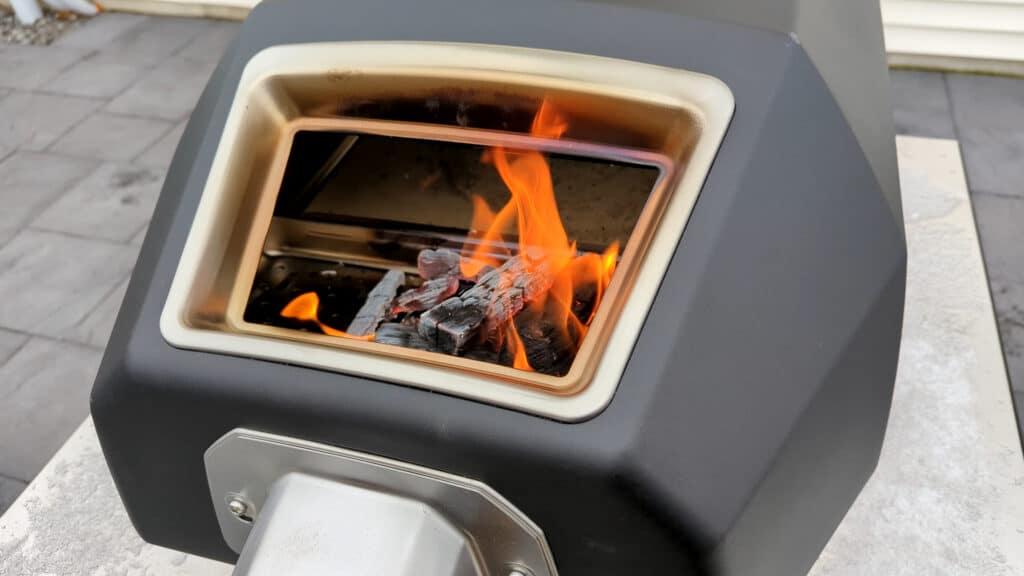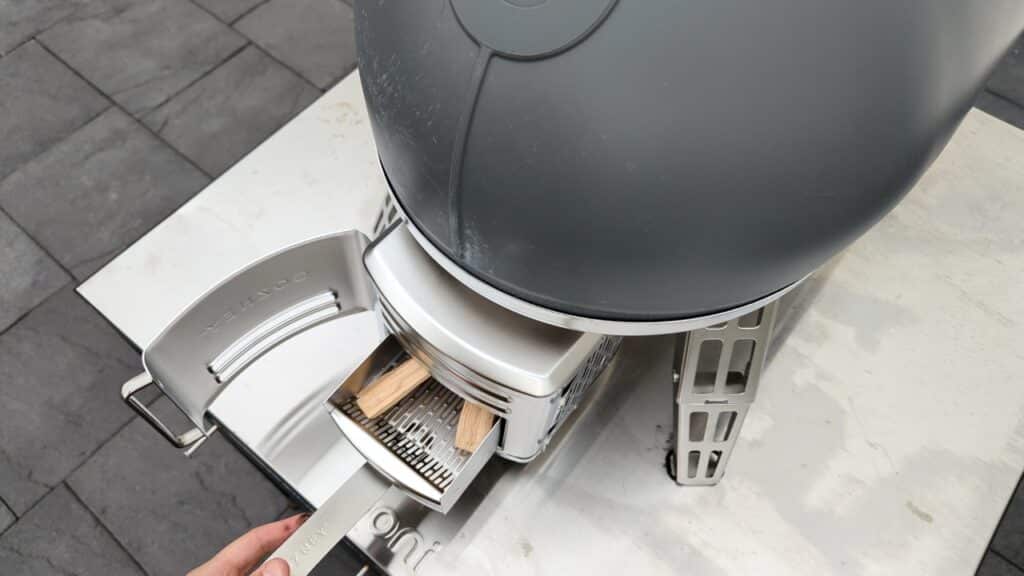So you’ve decided on a wood fired pizza oven (congratulations!). Now you just need to know how to get your fire lit and, crucially, keep it lit for as long as needed.
It’s important to get this right because the fire you build will directly affect the performance of your oven and the quality of pizza it produces. You can’t bake a perfect Neapolitan-style pizza with a crisp, airy, bubbled crust and perfectly melted cheese using a fire that’s too weak or too big. And there’s nothing worse than getting everything ready for pizza night and finding that your fire won’t start, won’t stay lit, or can’t get up to the right temperature.
But you don’t need to stress out about it. Lighting a pizza oven fire is (like most things) easy when you know how. And we’re going to talk you through how to do it here. We’ve put together this guide to starting and maintaining your fire, and we’ve got five top tips to help you nail this skill.
This advice works for any wood fired pizza oven, from portable camping ovens to built-in machines to DIY brick ovens. They all require the same method, and just different sizes of materials. So whatever wood fired oven you’re working with, here’s how to build and maintain the perfect fire.
Let’s get started!

Choose the correct wood type and size
Type. You can’t just throw any old wood into your oven and expect it to cook excellent pizza. Some types of wood won’t burn hot enough to get your oven up to the required temperature, and some woods contain harmful toxins you don’t want anywhere near your food.
You can check out our article: The Best Wood For Pizza Ovens, for a more detailed breakdown of this topic. But the main thing you need to know is that you should be using dried hardwood. This is because hardwood burns hotter than softwoods. And it needs to be dried because too much moisture will stop it from burning hot enough and produce too much smoke.
Oak, Maple, and Ash are popular choices because they burn clean and hot. Fruitwoods (such as apple or cherry) are also popular because of the wonderful fragrance they give off and the flavor they impart to the food; however, these are often more expensive and better reserved for smoking meats.
Once you get comfortable with your fire-starting skills, you should experiment with different hardwoods to find your favorite combination.
Size. You need the right size logs for your oven so that they fit inside it while leaving room for the pizza, and also so they can heat up the space effectively. The manufacturer’s guide that came with your oven (or that you can find on their website) should tell you the ideal log size for your oven, and some manufacturers – like Ooni – also sell logs cut to the perfect size for their ovens.
As a general guide, you want:
- Thin wood logs cut to 4 – 6″ for small portable pizza ovens.
- Thicker logs of 8 – 12″ inches for medium-sized ovens
- And around 16″ for large brick or built-in ovens.
You can buy the wood pre-cut for convenience or buy logs to split yourself if you fancy the workout.

Use a fire starter / kindling
If you put a log in your oven and try to light it, not much will happen. You need to start your fire slowly and carefully, using a firestarter and kindling to get it going.
The method is the same regardless of the size of your oven, just with different sizes of wood:
- Place firestarters and paper in the center of your oven, then build a pyramid of kindling over them (add some small logs if you’re working with a large oven).
- Put a light to the paper or firestarters and allow the flames to take hold properly before you add larger logs.
While starting a fire without using fire starters is possible, it’s a slower, more difficult process. Firestarters are effective accelerants that make your life easier, get your blaze off to a good start, and drastically reduce the chances of it dwindling and burning out before it gets going. So we would always recommend using them.
If you’re concerned about the chemicals in traditional fire starters, you can opt for natural ones instead, like the ones from Love Logs, which are made of waxed wood shavings.
A torch is your best friend
Once you’ve prepared your wood, you need to put a flame to it, and while matches or a standard lighter can get the job done, it’s possible for the fire starter to burn up before the logs ignite. I find it takes quite a bit longer.


My preferred method is to go for a propane-powered utility or cooking torch. This which will get your fire off to a roaring start, igniting the starter and also kickstarting the logs at the same time. We love the Bluu Pro torch because it’s effective, easy to use, and doesn’t just light fires. You can add it to your chef’s tool kit and use it to sear steaks, melt cheese, char vegetables, or caramelize sugar. Plus, look how fun this thing is!

Ensure good airflow
A common mistake when cooking with wood is to start the fire and then close the oven door because it seems like this will make the oven heat up quicker. Unfortunately, this can suffocate your fire, causing it to go out.
Fires need a lot of oxygen to flourish, so give yours a constant supply by keeping the door open and ensuring that the chimney and/or flue are also open.
Add a larger piece of wood
Another mistake that can ruin your pizza-making session is walking away and leaving your fire unsupervised. You’d be surprised by how quickly a lively fire can die down. If this happens, you’ll have to build it back up again, or worse, start from scratch. Instead, keep an eye on the flames, and once the fire is established, add more wood, using larger logs than those you used when starting the fire. This will keep your fire going for longer and produce good heat.
Once those logs are burning, and your oven is up to the right temperature, use an ash rake to slide the fire to the back or side of your oven, brush the embers and ash off the pizza stone/oven base, then start cooking pizzas!
That’s it
Simple right? Just follow these steps, and you should have a fire blazing and heating up your pizza oven in no time! Remember that cooking with wood has a learning curve, so if you don’t get it right the first time, don’t worry. Practice makes perfect, and if you keep at it you’ll soon be building the perfect pizza oven fire every time.
Happy fire starting!

